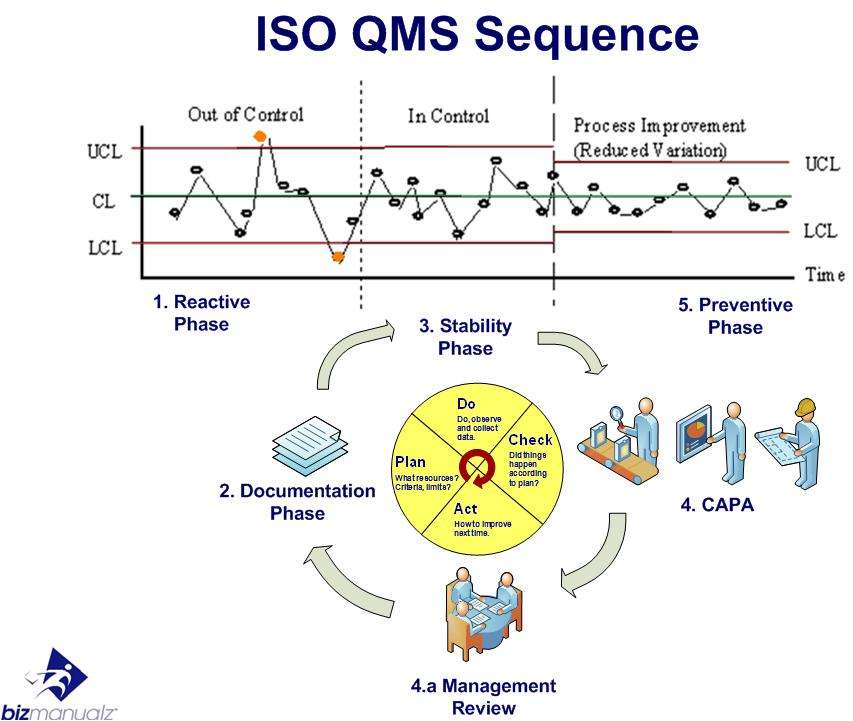How Much Time Do You Spend on Your ISO QMS Annually?

There is no simple answer to the question of the time commitment for an ISO Quality Management System (QMS). There are a number of variables to consider including the ISO standard you are registered to, the number of employees, the capability of your management team, the complexity of your business processes, and your knowledge of quality. The answers to such questions will determine the level of effort required to maintain an ISO system. How much time do you spend on your ISO QMS annually?
Spending Time on Your ISO QMS Varies
There are a few factors driving how much time you will spend each year woking on your ISO QMS.
- The type of ISO standard has a big impact on your time. ISO 9001 is a basic quality system and is easier to implement and manage than more advanced sector standards like AS9100 for aerospace or TS16949 for Automotive manufacturers. Both will take longer to implement than ISO 9001 because both have more clauses, higher expectations, and more specific requirements for implementation.
- The number of employees will define the number of communication paths, skills, and team interactions. Your ISO registrar will look at the number of employees to plan the registration audit length, which is based on the number of employee interviews expected. More employees means more training, management, and coordination so the number of employees has an obvious impact.
- The capability of your management team will have a noticeable impact. All ISO standards are driven by top management. If your top management is not supportive and knowledgeable of management best practices and quality, then the quality department will own the quality system and be expected to do most of the work. Your poor quality manager will be responsible for quality…
- A complex business processes have a lot of variation that will need to be controlled to be cost effective. ISO standards are about process control. To demonstrate control requires data, data analysis, and a good corrective action system to maintain control. Simple processes will require less control and be easier to manager.
- Your knowledge of quality, quality tools, and the ISO standard will make life easier or harder depending on your mastery of quality. Basic quality knowledge includes the process approach, quality tools, and a philosophy of “doing it right the first time”. More advanced quality mastery adds training in lean, six sigma, cost of quality, and a philosophy of “designing in quality”.
Recurring QMS Activities
All ISO systems require regular attention, care and feeding to ensure the systems works. Auditing, Action Steps, and Training are the primary activities. Let’s look at how much time an ISO system requires annually to operate for a small company of 50 employees.
ISO Auditing
All ISO systems require an audit program consisting of internal audits, registration audits, and maybe audits of your suppliers, by your customers, or the government.
- A full system audit should take 2 days of interviews plus 2 days for prep work and the audit report. So it is about 4 days of work. An audit schedule for your company could include 1 full system audit at the end of the year plus 2 to 4 internal audits of 4 hours each or 1 to 2 additional man days. That’s about 6 days of auditing each year. Using a second man would cut this in half to 3 days.
- Each audit will generate findings that require corrective action. Assume each action is 1-5 man days depending on the seriousness of the finding and the number of people involved. You should not be the only one working on the system so it is not 1-5 of your days only. This will take 1 day per finding of your time. Assuming 1-2 findings per audit you could have 8 per year. This will take 8 man days per year.
- Your ISO registration audit is 2 days on site each year with you as the guide, plus before and after time of 1 day to interface with the auditor.
Corrective Action Steps
ISO systems require actions to improve processes that are failing and even for those achieving planned results. Either way action needs to be taken to continuously improve.
- Someone has to review nonconformaces, customer complaints, and determine corrective or preventive actions. Assume you spend 1 day per month on this. Add more time if this is a big issue.
- Then you could hold a management review after each audit or plan on monthly reviews of 1 hour each plus 2 hours of before and after work. That adds 12×3=36 hours a year (4-1/2 days rounded to 5) for management review.
- Miscellaneous time should be budgeted for supplier quality, calibration, improvement projects, documentation tasks, and management discussions, 1 day per month or 12 days a year.
Quality Training
Education can be used for corrective action, preventive action, or for general improvement. Training is an all-purpose activity. The more education you plan for, the easier the ISO system will be to operate.
- You will need to train new employees on quality. Assume 1 hour training per month plus any training material updates. That’s about 12 hours a year rounded to 2 days.
- You should attend quality training of some type for continuing education of 2 days per year. Add more time for other key employees within your quality management system.
QMS Estimated TOTAL TIME
1. Internal audits: 3 days
2. Audit findings: 8 days
3. Registration audit: 3 days
4. Review nonconformances: 12 days
5. Management review: 1-5 days
6. Training employees on quality: 2 days
7. Continuing education: 2 days
8. Misc. quality discussions: 12 days
Your total time will vary depending on the ISO standard you use, number of employees you have, the capability of your management team, the complexity of your business processes, and your knowledge of quality. TOTAL TIME of 47 days per year or 2+ man months dedicated to quality is what a small company of 50 employees might require. Add more time if you are growing, have high turnover, a lot of nonconformances, new suppliers, products, processes, or improving more aggressively.
How Much Time Does an ISO System Require Annually?
Yes, you could require one person on a full time basis or a department of quality people if you are a small automotive manufacturer applying advanced product quality planning (APQP). These estimates provide a starting point for a discussion about your quality management system.















[…] What time commitment does an iso system require? Its based on employee numbers, management capability, process complexity, and your quality knowledge. […]